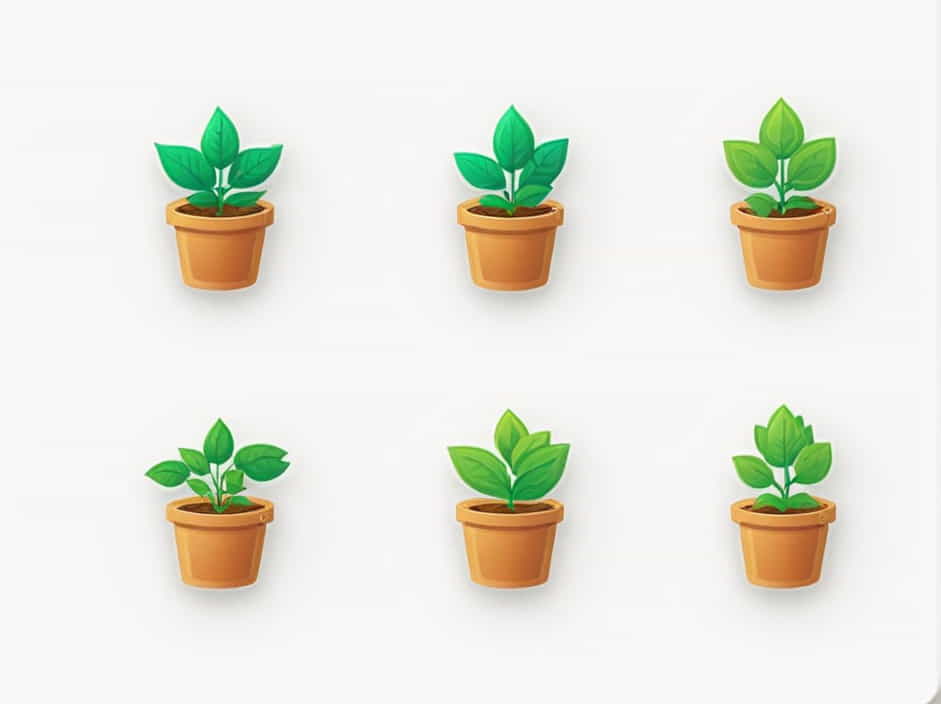Photosynthesis is the process that allows plants to convert sunlight into energy. This process is essential for life on Earth, as it provides oxygen and forms the base of the food chain. But what exactly do plants need to carry out photosynthesis?
This topic will explore the key components of photosynthesis, how plants use them, and why they are important for sustaining life.
What Is Photosynthesis?
Photosynthesis is the process by which plants, algae, and some bacteria convert light energy into chemical energy. This process occurs in the chloroplasts of plant cells, where light is absorbed by chlorophyll, the green pigment found in leaves.
The Photosynthesis Equation
The general equation for photosynthesis is:
This equation shows that plants use carbon dioxide (CO₂), water (H₂O), and sunlight to produce glucose (C₆H₁₂O₆) and oxygen (O₂).
What Do Plants Need for Photosynthesis?
Plants require several key components to photosynthesize effectively:
1. Sunlight: The Energy Source
✔ Role: Sunlight provides the energy needed to power photosynthesis.
✔ Absorption: Chlorophyll in the leaves absorbs red and blue wavelengths of light while reflecting green.
✔ Process: Light energy excites electrons, leading to the production of ATP and NADPH, which are used in the next stage of photosynthesis.
Without sunlight, plants cannot perform photosynthesis, which is why they thrive in well-lit environments.
2. Carbon Dioxide (CO₂): The Raw Material
✔ Source: Carbon dioxide is absorbed from the air through tiny openings in leaves called stomata.
✔ Function: It provides the carbon atoms needed to form glucose.
✔ Process: CO₂ is used in the Calvin cycle, where it is fixed into organic molecules.
Higher levels of CO₂ can increase the rate of photosynthesis, but too much can disrupt plant functions.
3. Water (H₂O): The Hydrogen Source
✔ Absorption: Plants take in water through their roots and transport it to the leaves via the xylem.
✔ Function: Water molecules are split into hydrogen and oxygen during the light-dependent reactions.
✔ Process: The hydrogen is used to create glucose, while the oxygen is released into the air.
Without water, plants wilt and cannot carry out photosynthesis efficiently.
4. Chlorophyll: The Light-Absorbing Pigment
✔ Location: Chlorophyll is found in chloroplasts within leaf cells.
✔ Function: It captures light energy and converts it into chemical energy.
✔ Types:
- Chlorophyll a: The primary pigment that absorbs light for photosynthesis.
- Chlorophyll b: An accessory pigment that helps absorb additional light wavelengths.
Plants without chlorophyll, such as albino plants, cannot photosynthesize and must rely on other sources for energy.
5. Nutrients and Enzymes: The Support System
✔ Nutrients: Essential minerals like magnesium, nitrogen, and phosphorus support photosynthesis.
✔ Enzymes: Specialized proteins speed up chemical reactions in the light-dependent and light-independent stages.
A deficiency in these nutrients can lead to poor plant growth and reduced photosynthesis rates.
The Two Stages of Photosynthesis
Photosynthesis occurs in two main stages:
1. Light-Dependent Reactions (The Energy Capture Phase)
✔ Takes place in the thylakoid membranes of the chloroplast.
✔ Sunlight is absorbed by chlorophyll, exciting electrons.
✔ Water is split, releasing oxygen as a byproduct.
✔ Energy molecules ATP and NADPH are produced.
2. Light-Independent Reactions (The Calvin Cycle)
✔ Occurs in the stroma of the chloroplast.
✔ Uses ATP and NADPH to convert CO₂ into glucose.
✔ Does not require direct sunlight but relies on energy from the first stage.
This second phase is where plants create the sugars they need for energy and growth.
Why Is Photosynthesis Important?
1. Provides Oxygen for Life
Photosynthesis releases oxygen, which is essential for the survival of animals, humans, and other organisms.
2. Forms the Basis of the Food Chain
Plants use glucose to grow, which then feeds herbivores, carnivores, and omnivores.
3. Helps Regulate Atmospheric CO₂
By absorbing CO₂, photosynthesis helps reduce greenhouse gases and maintain climate balance.
Plants use sunlight, carbon dioxide, water, and chlorophyll to carry out photosynthesis, producing the energy they need to survive. This process not only sustains plants but also supports life on Earth by providing oxygen and food.
Understanding photosynthesis helps us appreciate the vital role plants play in maintaining a balanced ecosystem.
